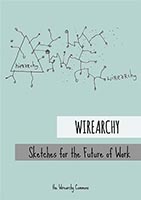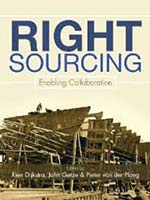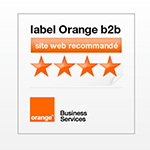This article has been cross-posted with ecollab blog carnival.
Much has been told and written about the capital importance of knowledge in organizations, and the rise of networks-enabled enterprise emphasizes even more the role of informal learning and knowledge sharing in human interactions in the workplace. Enterprise 2.0 is neither about technology nor about people, Enterprise 2.0 is about capturing and harnessing the knowledge flows which circulate inside and across organizations. But “capturing” knowledge is somehow like seizing the air we breathe. I f knowledge were an animal, it would definitely be a cat. Both Cheshire and Schrödinger’s cats.
Knowledge as Cheshire cat
As innocuous as the word seems, defining ‘knowledge’, particularly in relation to ‘information’, is no easy task. Furthermore, English language only has one word where French, for example, has two: “savoir” and “connaissance”. “Savoir” encompasses every human symbolic production (whether it be concepts, data, methods, philosophies…) and is independent from any being. “Connaissance”, on the other side, relates to the appropriation of knowledge by the human being. It is a never-ending process of understanding in the spiritual sense of it (see for instance, in French, these articles from Florence Meichel or René Barbier). Most of modern definitions of knowledge assume its social nature, embedding value into context.
The same piece of information won’t have the same meaning and importance if delivered or learned in different contexts. The way we learn this information is by itself part of its contextual inheritance, making look knowledge like the Cheshire’s cat: whenever you think you are able to formalize it, it has already taken a different meaning in another context, leaving you with dead, barely usable, information. Every Knowledge Manager knows how difficult reusability of formalized knowledge is.
An idealistic vision of a network-based company would allow for free flow of knowledge without any formalization. Nevertheless, the need for formalizing informal learning, as way of capturing informal knowledge, is quite mandatory in our organizations, notably in regard to HR issues. As Jon Husband recently pointed out:
there’s also ongoing dissonance or competition between the methods behind structured and defined organizational forms and activities, and the growing world of hyperlinked flows in which knowledge and meaning are built layer by layer, exchange by exchange
Organizational structures, job requirements and training valuation require a way to measure informal learning, thus to somehow formalize it. Rather than chasing the utopian goal to formalize knowledge, companies are in fact able to formalize and measure its outcome (think about Cheshire cat’s smile): increased ability to solve problems, coaching or mentoring assignments,…
Knowledge as Schrödinger’s cat
Furthermore, thinking of knowledge as a dual, formal versus informal, statement is a mere illusion. Any discrete piece of knowledge is paradoxically at the same time both a formal and informal artifact and, like in the Schrödinger’s cat paradox, we cannot assert anything before we actually use it. Every parent knows that acquisition of the most ever formalized knowledge by children is in fact conditioned by the relationship they maintain with their teachers.
Web 2.0 technologies allow us to formalize the informal, allowing us to tag, comment, recommend documents or contributions, adding them an interactive, tangible contextual layer. At the opposite, patents are among the most formal pieces of knowledge. But the use of properly designed SNA tools unveils their hidden informal nature. By uncovering citations, comments, and referencing and patterns of influence among clusters of linked patents and examinations, network analysis highlights intangible relationships. By changing our view on knowledge, we are able to consider it as formal or as informal, switching from an artifact to another.
Design is another great example of this “artifact switching”, which incarnates informal information gathered from customers, about their behaviors, conversations and wishes, into real-life formal products. This paradoxical co-existence, while difficult to leverage, is what ultimately keeps knowledge alive and useful.







